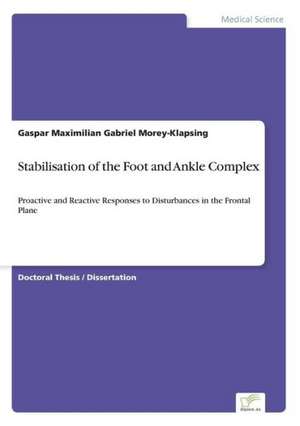Stabilisation of the Foot and Ankle Complex
Autor Gaspar Maximilian Gabriel Morey-Klapsingen Limba Engleză Paperback – 25 iun 2005
Preț: 624.99 lei
Preț vechi: 657.89 lei
-5% Nou
Puncte Express: 937
Preț estimativ în valută:
119.61€ • 124.55$ • 101.08£
119.61€ • 124.55$ • 101.08£
Carte tipărită la comandă
Livrare economică 10-24 martie
Preluare comenzi: 021 569.72.76
Specificații
ISBN-13: 9783838688350
ISBN-10: 383868835X
Pagini: 120
Dimensiuni: 148 x 210 x 9 mm
Greutate: 0.17 kg
Editura: diplom.de
ISBN-10: 383868835X
Pagini: 120
Dimensiuni: 148 x 210 x 9 mm
Greutate: 0.17 kg
Editura: diplom.de
